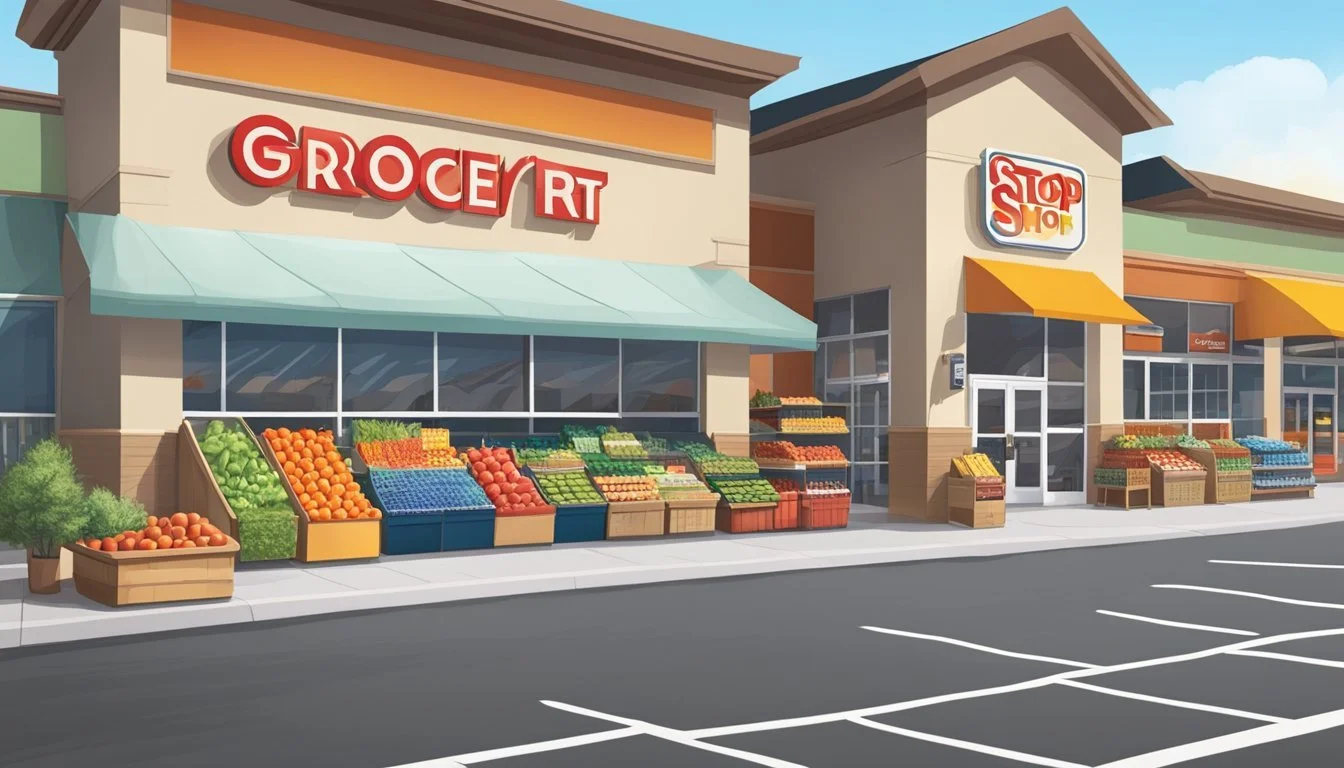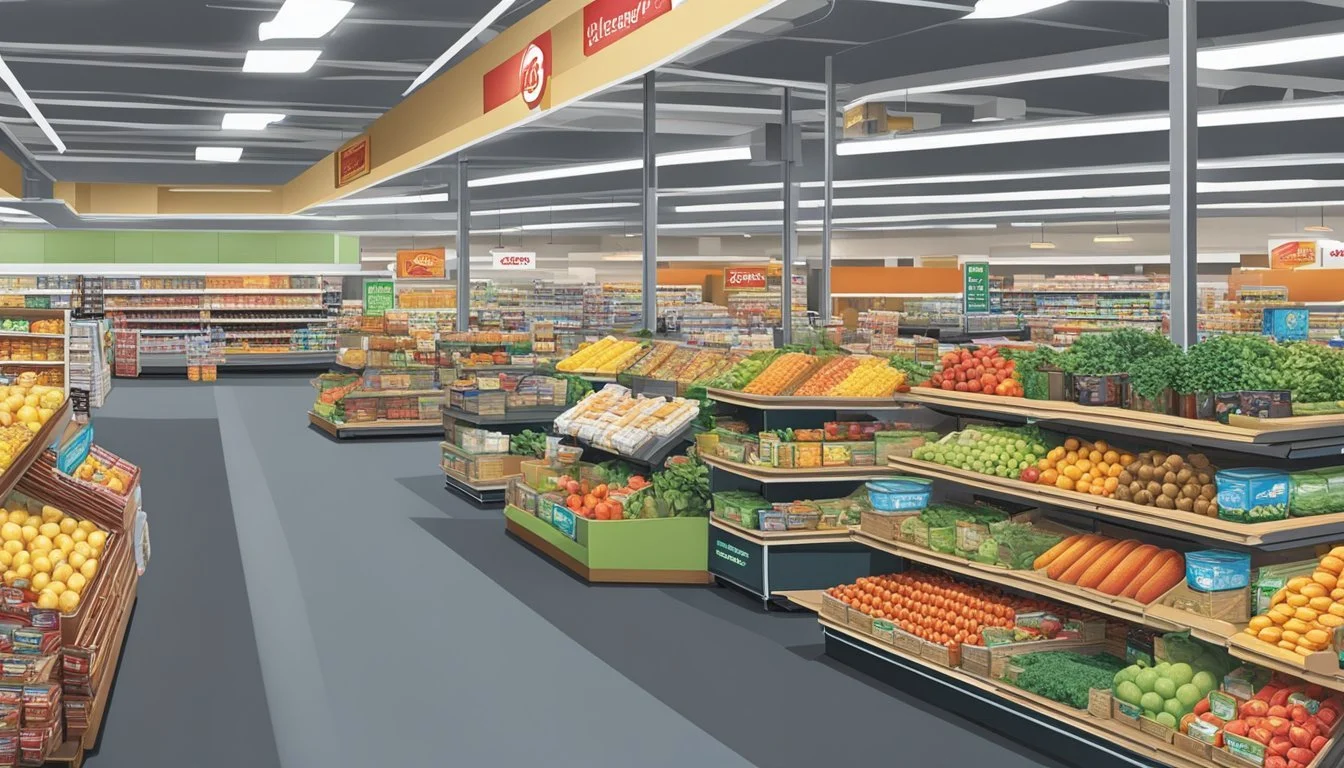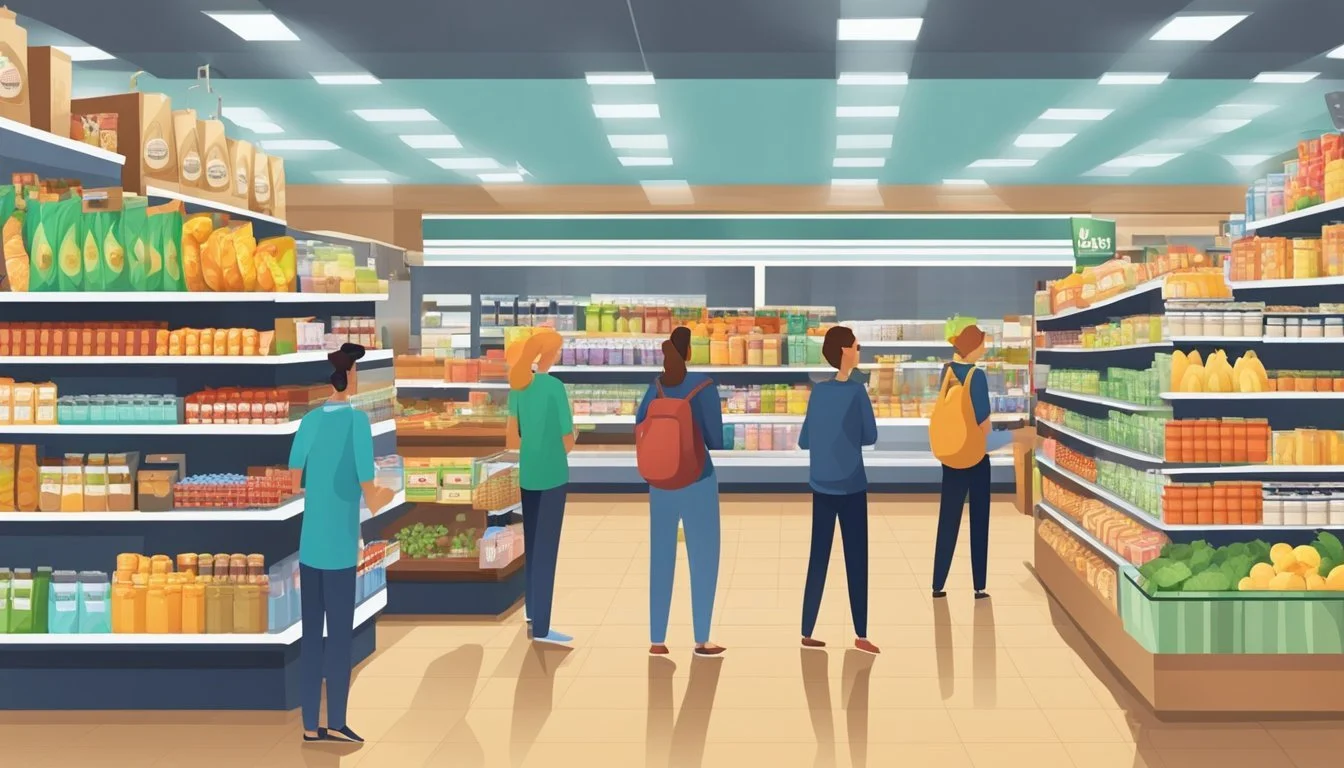Grocery Outlet vs Stop & Shop
A Comprehensive Comparison of Prices, Quality, and Selection
Grocery Outlet and Stop & Shop are two popular supermarket chains with distinct offerings and pricing strategies. Grocery Outlet focuses on providing deep discounts on surplus and closeout inventory, while Stop & Shop offers a wider selection of products in a traditional grocery store format.
Grocery Outlet generally offers lower prices on many items compared to Stop & Shop, making it an attractive option for budget-conscious shoppers. However, Stop & Shop provides a more extensive range of products and brands, including fresh produce, deli items, and specialty foods. This broader selection can be appealing to customers seeking specific items or greater variety in their grocery shopping experience.
Both stores have their strengths and appeal to different consumer needs. Grocery Outlet excels in offering significant savings on various products, while Stop & Shop provides a more comprehensive shopping experience with a larger inventory and additional services like pharmacies in many locations. The choice between these two grocery chains ultimately depends on individual preferences, budget considerations, and specific shopping requirements.
Company Backgrounds
Grocery Outlet and Stop & Shop have distinct histories that shaped their growth into major grocery retailers. Both companies adapted to changing market conditions over decades of operation.
History of Grocery Outlet
Grocery Outlet began in 1946 as Cannery Sales in San Francisco. The company initially sold military surplus and canned goods at discount prices. In the 1970s, Grocery Outlet expanded by opening its first independently operated franchise location in Oregon.
The company grew steadily over the following decades. It focused on selling overstock and closeout merchandise from manufacturers at deeply discounted prices. Grocery Outlet expanded beyond the West Coast in 2011, opening stores in Pennsylvania.
Today, Grocery Outlet operates over 400 stores across the United States. Most locations are run by independent owner-operators under the Grocery Outlet brand name.
History of Stop & Shop
Stop & Shop traces its roots to 1914 when it was founded as the Economy Grocery Stores Company in Somerville, Massachusetts. The company pioneered self-service grocery shopping, allowing customers to select their own items.
In 1947, the chain officially became Stop & Shop. It expanded rapidly in the following decades through new store openings and acquisitions of other grocery chains.
Stop & Shop merged with the Ahold company in 1996. Today, it operates as a subsidiary of Ahold Delhaize, a major international grocery retailer. Stop & Shop now has over 400 stores across the Northeastern United States.
Pricing and Value
Grocery Outlet and Stop & Shop offer distinct approaches to pricing and value. Their strategies for savings, discounts, and loyalty programs can significantly impact grocery bills.
Assessing Price Points
Grocery Outlet typically offers lower prices on many items compared to traditional supermarkets. Their business model focuses on selling overstock and closeout products at discounted rates. Stop & Shop, as a conventional grocery chain, generally has higher regular prices but provides a wider selection of products.
Grocery Outlet's prices can be up to 40-70% lower than other stores on certain items. However, their inventory changes frequently, which can make consistent savings on specific products challenging. Stop & Shop maintains more stable pricing but tends to be pricier overall.
Savings and Discounts
Both stores offer ways to save, but their methods differ. Grocery Outlet relies heavily on its everyday low prices model, with limited additional discounts. They occasionally feature special "WOW" deals on select items for extra savings.
Stop & Shop provides more traditional sales and promotions. They offer weekly specials, digital coupons, and in-store markdowns. Customers can often find Buy One Get One Free deals and multi-buy discounts at Stop & Shop.
Loyalty Programs and Deals
Stop & Shop's loyalty program, Stop & Shop GO Rewards, allows customers to earn points on purchases and redeem them for discounts on gas or groceries. The program also provides personalized deals and digital coupons.
Grocery Outlet does not have a formal loyalty program. Instead, they focus on providing consistent low prices without the need for membership cards or point systems. Some Grocery Outlet locations offer email newsletters with special offers and new product announcements.
Stop & Shop's digital coupons can be loaded directly to loyalty cards, simplifying the savings process. Grocery Outlet, while lacking digital coupons, compensates with its consistently low-priced items across various categories.
Product Selection and Quality
Grocery Outlet and Stop & Shop offer distinct product selections that cater to different shopper needs. Their quality and variety vary across departments, impacting customer choices and satisfaction.
Produce Quality and Variety
Grocery Outlet provides a rotating selection of produce at discounted prices. The quality can be hit-or-miss, with some items nearing their peak ripeness. Stop & Shop maintains a more consistent produce section with a wider variety of fresh fruits and vegetables.
Stop & Shop typically stocks seasonal produce and offers organic options. Their produce department is larger and better organized than Grocery Outlet's.
Grocery Outlet sometimes features unique or exotic produce items at bargain prices. However, availability is less predictable due to their opportunistic buying model.
Bread, Dairy, and Meat Offerings
Stop & Shop excels in these staple categories. They offer a full-service deli and bakery, providing freshly sliced meats, cheeses, and baked goods. Their dairy section is extensive, featuring both national brands and store-brand options.
Grocery Outlet's selection in these areas is more limited. They stock pre-packaged deli meats and cheeses, and their bakery options are primarily shelf-stable or frozen items.
Both stores carry a range of milk, eggs, and yogurt. Stop & Shop typically has more variety in specialty dairy products like artisanal cheeses.
Frozen Foods and Dry Goods
Grocery Outlet shines in frozen foods and dry goods. They often feature brand-name items at significant discounts, though selection can be unpredictable.
Stop & Shop offers a more comprehensive and consistent range of frozen and shelf-stable products. Their inventory includes everything from basic staples to specialty items.
Grocery Outlet's frozen section frequently includes unique or gourmet items at bargain prices. Stop & Shop's frozen foods are more mainstream but cover a wider range of dietary needs.
Store Brand Items vs. Name-Brand
Stop & Shop's store brand, SB, covers a wide range of products across departments. These items are generally good quality and priced lower than national brands.
Grocery Outlet primarily sells name-brand products at discounted prices. They don't have a dedicated store brand, but they do offer their own line of wine under the "Grape Finds" label.
Stop & Shop provides a balance of store-brand and name-brand options in most categories. Grocery Outlet's selection is heavily skewed towards discounted name-brands.
Availability of Organic and Specialty Foods
Stop & Shop has made significant strides in expanding its organic and specialty food offerings. They stock a variety of organic produce, meats, and packaged goods. Their specialty food section includes international items and foods for specific dietary needs.
Grocery Outlet's organic and specialty food selection is more limited and varies by location. They occasionally feature organic items at discounted prices, but the selection is not as comprehensive or consistent as Stop & Shop's.
Stop & Shop is more likely to carry a stable inventory of gluten-free, vegan, and other specialty diet products. Grocery Outlet may have these items, but availability is less reliable.
Store Experience and Services
Grocery Outlet and Stop & Shop offer distinct shopping experiences with varying levels of customer service and amenities. Each store's layout, assistance options, and additional services contribute to their unique appeal for shoppers.
Store Layout and Navigation
Grocery Outlet typically features a no-frills warehouse-style layout. Aisles are often wider to accommodate bulk displays and rotating inventory. Products are arranged in general categories, but specific item locations may change frequently due to the store's discount model.
Stop & Shop employs a more traditional supermarket layout. Departments are clearly marked, with produce, deli, and bakery sections along the perimeter. Aisles are organized by product type, making navigation easier for regular shoppers.
Both stores use signage to guide customers, but Stop & Shop's consistency in product placement may be more convenient for quick trips.
Customer Service and Assistance
Grocery Outlet stores generally have fewer staff members on the floor. Cashiers are available for checkout and basic inquiries, but specialized assistance may be limited.
Stop & Shop offers more comprehensive customer service. Dedicated staff are often present in specialty departments like deli and bakery. Customer service desks provide additional support for returns, special orders, and general inquiries.
Both chains train their employees to be helpful and courteous, but Stop & Shop's larger staff presence may result in more readily available assistance during shopping trips.
Additional Amenities and Services
Grocery Outlet focuses primarily on providing discounted groceries, with limited additional services. Some locations offer basic amenities like shopping carts and handicap accessibility.
Stop & Shop provides a wider range of amenities and services, including:
In-store pharmacies at many locations
Self-checkout options
Grocery delivery and curbside pickup services
Fuel stations at select stores
Digital coupons and loyalty programs
Stop & Shop's broader service offerings cater to customers seeking convenience and a more comprehensive shopping experience. Grocery Outlet's streamlined approach appeals to budget-conscious shoppers focused primarily on product selection and pricing.
Locations and Accessibility
Grocery Outlet and Stop & Shop have distinct regional footprints that impact their accessibility for shoppers. Store locations and convenience play a key role in determining which chain may be preferable for customers in different areas.
Regional Presence and Proximity
Grocery Outlet operates primarily on the West Coast, with a growing presence in the Midwest and Mid-Atlantic regions. The chain has over 400 stores across California, Oregon, Washington, Idaho, Nevada, and Pennsylvania.
Stop & Shop focuses on the Northeast, with more than 400 locations throughout New England and the Mid-Atlantic. The chain has a strong presence in Massachusetts, Connecticut, Rhode Island, New York, and New Jersey.
For shoppers in the Northeast, Stop & Shop offers greater proximity and accessibility. Those on the West Coast will find Grocery Outlet more readily available.
Convenience and Parking
Grocery Outlet typically selects locations in suburban areas with ample parking. Their stores are often situated in strip malls or standalone buildings, providing easy access for customers arriving by car.
Stop & Shop stores vary in size and location. Many are found in suburban shopping centers with spacious parking lots. Some urban locations offer more limited parking options.
Both chains prioritize convenience, but store layouts differ. Grocery Outlet's smaller format focuses on discounted items, while Stop & Shop offers full-service departments like pharmacies and bank branches in many locations.
Customer Satisfaction and Perception
Customer satisfaction and public perception play crucial roles in the success of grocery chains. Grocery Outlet and Stop & Shop differ in their approaches to building customer loyalty and maintaining positive brand images.
Analysis of Customer Reviews
Grocery Outlet receives praise for its low prices and unique product selection. Customers appreciate the "treasure hunt" experience of finding discounted brand-name items. Many reviewers mention the friendly staff and clean stores.
Stop & Shop garners positive feedback for its wide product range and convenient locations. Shoppers value the chain's loyalty program and digital coupons. Some customers note inconsistent produce quality across different locations.
Both chains face criticism for occasional stock shortages and long checkout lines during peak hours. Grocery Outlet reviews sometimes mention limited organic options, while Stop & Shop receives mixed feedback on its self-checkout systems.
Branding and Public Image
Grocery Outlet positions itself as a bargain hunter's paradise, emphasizing value and savings. The chain's marketing highlights its ability to offer name-brand products at deep discounts. This resonates with budget-conscious shoppers and deal seekers.
Stop & Shop focuses on convenience and community involvement in its branding efforts. The chain promotes its digital tools, delivery services, and local partnerships. Its long-standing presence in many communities contributes to a familiar, trusted image.
Both chains actively engage in corporate social responsibility initiatives. Grocery Outlet supports local food banks, while Stop & Shop emphasizes sustainability efforts and charitable giving programs.
Frequency of Product Recalls
Product recalls impact customer trust and store reputation. Grocery Outlet, due to its sourcing model, may occasionally stock products near expiration dates. This can lead to more frequent removals of items from shelves, though not necessarily formal recalls.
Stop & Shop, as part of a larger corporation, has established recall procedures. The chain promptly communicates recalls through its website, mobile app, and in-store notices. Recent years have seen recalls for various items, including produce, prepared foods, and packaged goods.
Both chains prioritize food safety and customer communication during recall events. Grocery Outlet's smaller size allows for quicker response times, while Stop & Shop benefits from corporate-level resources in managing recall logistics.
Market Presence and Competition
Grocery Outlet and Stop & Shop operate in distinct market segments, each facing unique competitive challenges. Their strategies and positioning significantly influence local and national grocery landscapes.
Comparison with Other Supermarkets
Grocery Outlet competes as a discount grocer, offering low prices on surplus and closeout items. It faces competition from other discount chains like Aldi and Lidl. Stop & Shop, a more traditional supermarket, contends with a wider range of competitors including ShopRite, Wegmans, and Giant.
Walmart and Target pose threats to both chains, offering groceries alongside general merchandise. Amazon's entry into grocery retail through Whole Foods and Amazon Prime delivery services adds another layer of competition.
Stop & Shop's prices tend to be higher than discount chains but lower than premium retailers like Whole Foods. Grocery Outlet's pricing model allows it to undercut many competitors on specific items, though its inventory can be less predictable.
Impact on Local and National Markets
Grocery Outlet's expansion has disrupted local markets by offering steep discounts on brand-name products. This forces other retailers to adjust pricing strategies to remain competitive. The chain's growth has been particularly noticeable in Western states.
Stop & Shop, with over 400 locations in the Northeast, plays a significant role in regional grocery retail. Its market presence influences pricing and product offerings of other chains in the area. However, the company has faced challenges in recent years, closing some underperforming stores to stabilize its position.
Both chains contribute to market fragmentation, making it harder for any single retailer to dominate. This competition benefits consumers through lower prices and increased choices in product categories and shopping experiences.
Strategies for Maximizing Value
Smart shopping techniques can help you get the most out of your grocery budget at Grocery Outlet and Stop & Shop. Comparing prices, utilizing discounts, and adopting effective shopping practices are key to maximizing savings.
Comparing Prices Across Chains
Price comparison is essential for savvy shoppers. Check weekly circulars and online ads from both Grocery Outlet and Stop & Shop to identify the best deals. Keep a price book to track costs of frequently purchased items. This allows for informed decisions on where to buy specific products.
Mobile apps can streamline price comparisons. Some apps let users scan barcodes to compare prices across multiple stores. Others aggregate local grocery ads, making it easy to spot the best offers without visiting multiple websites.
Consider unit pricing when comparing. The cost per ounce or per item often reveals better value, especially for bulk purchases or different package sizes.
Making Use of Discounts and Coupons
Both Grocery Outlet and Stop & Shop offer various ways to save. Sign up for loyalty programs to access exclusive discounts and personalized offers. Stop & Shop's Gas Rewards program provides fuel savings based on grocery purchases.
Digital coupons are increasingly popular. Load them onto loyalty cards for automatic savings at checkout. Grocery Outlet often features manufacturer's coupons, while Stop & Shop offers both store and manufacturer coupons.
Stackable coupons can lead to significant savings. Combine manufacturer's coupons with store promotions when possible. Some stores allow using a paper coupon alongside a digital one for the same item.
Effective Grocery Shopping Practices
Planning meals before shopping helps avoid impulse purchases and reduces food waste. Create a detailed list based on planned meals and stick to it. This approach keeps spending in check and ensures you buy only what you need.
Timing purchases around sales cycles can lead to substantial savings. Many grocery items follow predictable discount patterns. Stock up on non-perishables when they're at their lowest price.
Buying in-season produce is both cost-effective and ensures better quality. Both Grocery Outlet and Stop & Shop often feature seasonal items at competitive prices. Consider purchasing and freezing excess produce when prices are low.
Explore store brand alternatives to name-brand products. These are often significantly cheaper and comparable in quality. Both chains offer their own private label options across various categories.






